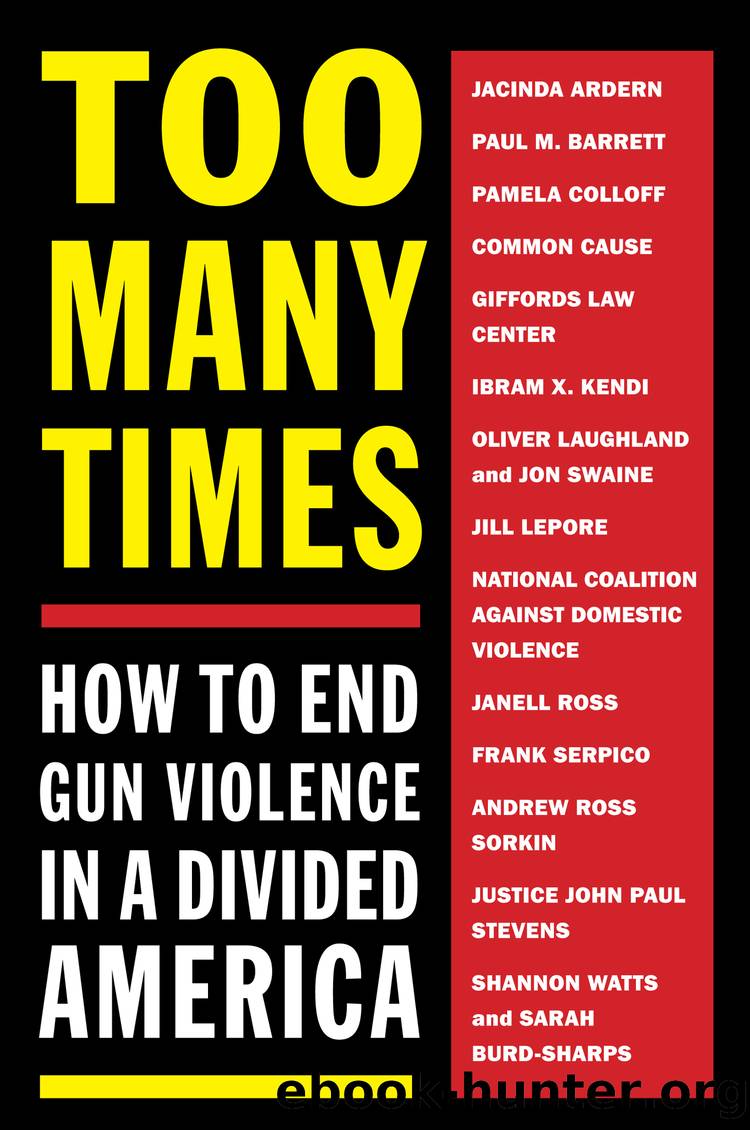Too Many Times by Unknown

Author:Unknown
Language: eng
Format: epub
Publisher: Melville House
Published: 2020-10-13T00:00:00+00:00
II
The proper allocation of military power in the new Nation was an issue of central concern for the Framers. The compromises they ultimately reached, reflected in Article Iâs Militia Clauses and the Second Amendment, represent quintessential examples of the Framersâ âsplitting the atom of sovereignty.â
Two themes relevant to our current interpretive task ran through the debates on the original Constitution. âOn the one hand, there was a widespread fear that a national standing Army posed an intolerable threat to individual liberty and to the sovereignty of the separate States.â23 Governor Edmund Randolph, reporting on the Constitutional Convention to the Virginia Ratification Convention, explained: âWith respect to a standing army, I believe there was not a member in the federal Convention, who did not feel indignation at such an institution.â24 On the other hand, the Framers recognized the dangers inherent in relying on inadequately trained militia members âas the primary means of providing for the common defense,â25; during the Revolutionary War, â[t]his force, though armed, was largely untrained, and its deficiencies were the subject of bitter complaint.â26 In order to respond to those twin concerns, a compromise was reached: Congress would be authorized to raise and support a national Army and Navy, and also to organize, arm, discipline, and provide for the calling forth of âthe Militia.â27 The President, at the same time, was empowered as the âCommander in Chief of the Army and Navy of the United States, and of the Militia of the several States, when called into the actual Service of the United States.â28 But, with respect to the militia, a significant reservation was made to the States: Although Congress would have the power to call forth, organize, arm, and discipline the militia, as well as to govern âsuch Part of them as may be employed in the Service of the United States,â the States respectively would retain the right to appoint the officers and to train the militia in accordance with the discipline prescribed by Congress.29
But the original Constitutionâs retention of the militia and its creation of divided authority over that body did not prove sufficient to allay fears about the dangers posed by a standing army. For it was perceived by some that Article I contained a significant gap: While it empowered Congress to organize, arm, and discipline the militia, it did not prevent Congress from providing for the militiaâs disarmament. As George Mason argued during the debates in Virginia on the ratification of the original Constitution:
âThe militia may be here destroyed by that method which has been practiced in other parts of the world before; that is, by rendering them uselessâby disarming them. Under various pretences, Congress may neglect to provide for arming and disciplining the militia; and the state governments cannot do it, for Congress has the exclusive right to arm them.â30
This sentiment was echoed at a number of state ratification conventions; indeed, it was one of the primary objections to the original Constitution voiced by its opponents. The Anti-Federalists were ultimately unsuccessful in
Download
This site does not store any files on its server. We only index and link to content provided by other sites. Please contact the content providers to delete copyright contents if any and email us, we'll remove relevant links or contents immediately.
Fury of Magnus by Graham McNeill(2089)
The Fine Print (Dreamland Billionaires Book 1) by Lauren Asher(1867)
The Rose Code by Kate Quinn(1620)
The Last House on Needless Street by Catriona Ward(1588)
Luster by Raven Leilani(1579)
Transcendent Kingdom by Yaa Gyasi(1569)
Moonflower Murders by Anthony Horowitz(1419)
Malibu Rising by Taylor Jenkins Reid(1374)
This Changes Everything by Unknown(1187)
The Lying Life of Adults by Elena Ferrante(1170)
The Lost Book of the White (The Eldest Curses) by Cassandra Clare & Wesley Chu(1156)
The Midwife Murders by James Patterson & Richard Dilallo(1151)
The New Wilderness by Diane Cook(1123)
Written in the Stars by Alexandria Bellefleur(1097)
Ambition and Desire: The Dangerous Life of Josephine Bonaparte by Kate Williams(1087)
The Kindest Lie by Nancy Johnson(1086)
The Lying Life of Adults by Elena Ferrante;(1054)
Every Vow You Break by Swanson Peter(1043)
Wandering in Strange Lands by Morgan Jerkins(1017)
